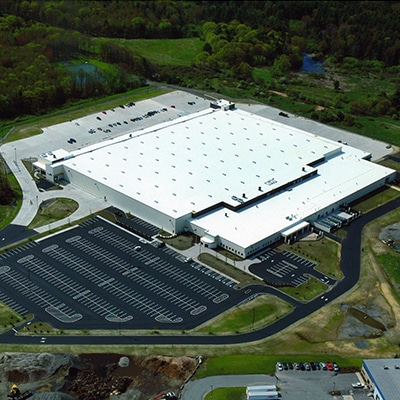The wind chill on January 11, 1991 was close to 70 below.
Mike Tubbs, our Vice President of Business Development specializing in Postal Service projects, wasn’t dressed for the weather.
Mike, his family and a coterie from The Korte Company had come to Huron, South Dakota, to celebrate substantial completion of a new mail processing annex.
It was one in a trio of USPS projects simultaneously completed in early 1991, and it had been a hard job.
Hard because the schedule was tight and the deadline was firm. Hard because the harsh winter of the northern Plains did our crews no favors. Hard because we’d never worked in this part of the country before.
If we were going to be successful, we needed to do some homework. So let’s go back to the beginning.
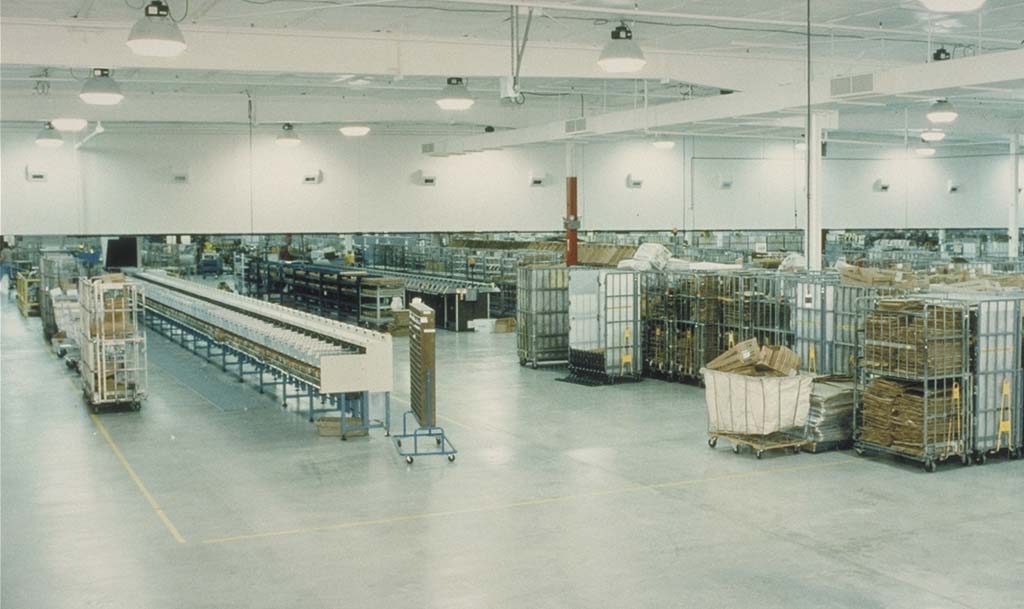
You’ll know it when you see it
The construction market in St. Louis is like anywhere: cyclical. And in early 1990, it was in a slump. The Korte Company was looking hard for work.
The prospects of winning any significant local work seemed dim. Competitors tripped all over themselves to reduce fees. The first three hard-bid projects had come and gone, and we’d gone 0-for-3. Layoffs were looming.
We did some soul searching.
We needed to get back to our roots. What did we do best? And where could we do it?
The first question was easier to answer: We were best at Design-Build. But the second was harder. Design-Build opportunities were still rare in St. Louis at the time, so we needed to cast a wider net.
Where could we find work that would fit our skills, allow us to make a fair profit and keep our people working?
So Dennis Calvert, an architect-turned-business development guru, and Alan Schorfheide, who headed up estimation and preconstruction, did some digging. And they noticed the federal government posting construction projects on the Federal Business Opportunities (FBO) board. After more research, they learned that a “maverick” facilities official in a regional USPS office in Denver was interested in the Design-Build model, and that requests for proposals for three simultaneous Design-Build projects were imminent.
Three new processing and distribution facilities would be built. Huron was one of them. The others were in Grand Forks, North Dakota, and North Platte, Nebraska.
The Korte Company had never done Design-Build for the Postal Service. And we’d never worked in any of those areas. But the opportunity was nonetheless compelling: We’d recently completed a handful of smaller hard dollar bid USPS projects in southern Illinois. We were eager to show we could partner up with USPS on bigger Design-Build projects.
And we were determined to land all three projects at once.
Alan sent Mike to Huron to do some recon on the ground. His instructions were clear.
“He said, ‘You need to get out there and do some due diligence,’” Mike recalled. “He told me to get the lay of the land, check out who the subs are.”
The company set Mike up in the Dakota Inn, a two-story motor lodge shaped like a backwards ‘7’ on the northeast corner of town. He would know the place when it saw it because it was home to the world’s largest pheasant, a 20-foot-tall, 40-foot-long male of the species perched atop a small brick building beside the inn’s cracked asphalt parking lot.
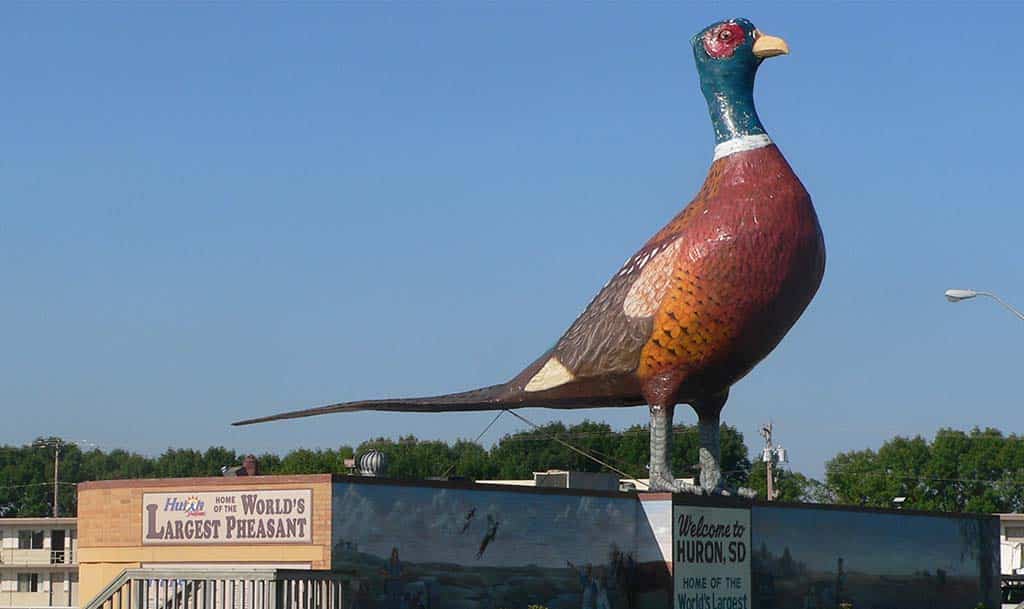
It’s still there.
“That was the first due diligence trip I was on. But what I learned from that, and what I think the company learned, was that you don’t go after projects in outlying areas without doing due diligence,” Mike said. “And that can include just going down to the local bar and shooting the bull.”
Which is what he did, among other tactics.
Mike’s search engine was the yellow pages. He did a lot of driving and made too many face-to-face introductions to count. He toured other local job sites and called on local suppliers and subcontractors. When you’re new in town, no one knows if you’re the real deal. Mike had to prove that we were.
“I drove around. I went to the site and kicked the dirt. I found out who owned it, and what it had been before. I found where the closest borrow pits were and who owned all the earthmoving equipment. I went around to all the geotechnical engineers,” he said. “It seems so foreign compared to what we do now. But you find out a lot of information that way, if you’re open and friendly with people, and if they believe you are sincere about the project and your interest in them.”
“Subs and suppliers appreciate if you meet with them at their facility and show them that respect,” Mike continued. “This effort is required to capture work anywhere, but especially in smaller communities where we are unknown.”
The Korte Company used the intel Mike gathered to build a construction team, a mixture of local subs along with a handful we brought along from St. Louis.
The road trip paid off: The USPS awarded the whole trio — Huron, Grand Forks and North Platte — to The Korte Company on June 1, 1990.
You can draw a straight line from those three projects to our most recent USPS efforts in Los Angeles, California and Austin, Texas. That’s 50-plus projects and three decades of developing and honing some of our most essential skills.
The total team effort
It’s easy to get lost in the minutiae of construction project. But this was three projects, not one, and all ongoing at once. Three new locations, three construction teams, three tight deadlines and one customer we could not afford to disappoint.
The work Mike did to assure success in Huron was only the tip of an iceberg of hard work.
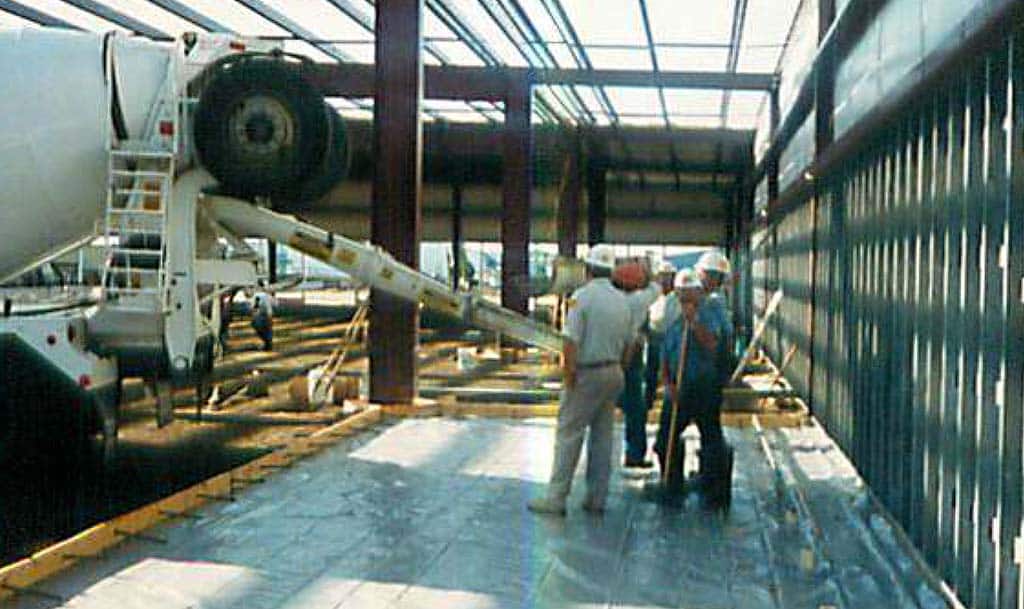
Three exceptional project superintendents were enlisted to have boots on the ground on each of these projects:
- Jeff Solis kept work on track from start to finish in Huron
- Down in North Platte, Nebraska, it was Jerry Nail
- Duane Sconce saw the northern lights from his posting at Grand Forks, North Dakota
Jeff, Jerry and Duane couldn’t have managed without the guidance and encouragement from headquarters.
From home base in Highland, Brian Beyer, Jay Korte, Tom Korte, Alan Schorfheide and Dennis Calvert kept three teams in three states organized and pointed in the same direction.
Simply put, if it wasn’t for the efforts of those involved on those three Design-Build projects for the USPS, we might not have had the chance to deliver the other four dozen that came over the next 30 years.
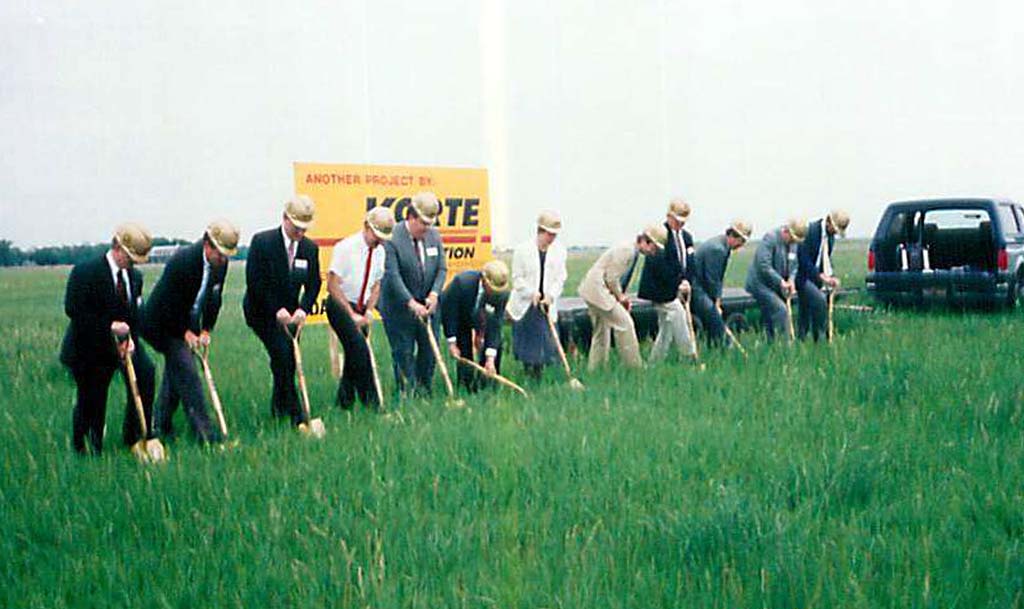
Sharad Shrestha’s parka
Back in Huron, June 1 was day zero. We had until the following January 11 — Mike’s birthday, as a matter of fact — to reach substantial completion.
Long story short, we made it in time, which is why Mike was dressed for a party.
All that was left was for Sharad Shrestha, a Design & Construction Manager for the USPS at the time, to sign off.
“Everything worked inside the building. It looked great,” Mike said. “I said, ‘Well, Sharad, are we done? We’re good, right?’”
They were not. Sharad, who Mike says is a man of “infinite detail,” had some due diligence of his own to do. He wanted to go onto the roof.
Sharad had all the gear he needed: a parka, mittens, overalls and ice grips strapped over his boots.
“I had forgotten that Sharad’s first 10 years with the Postal Service were in Alaska,” Mike said.
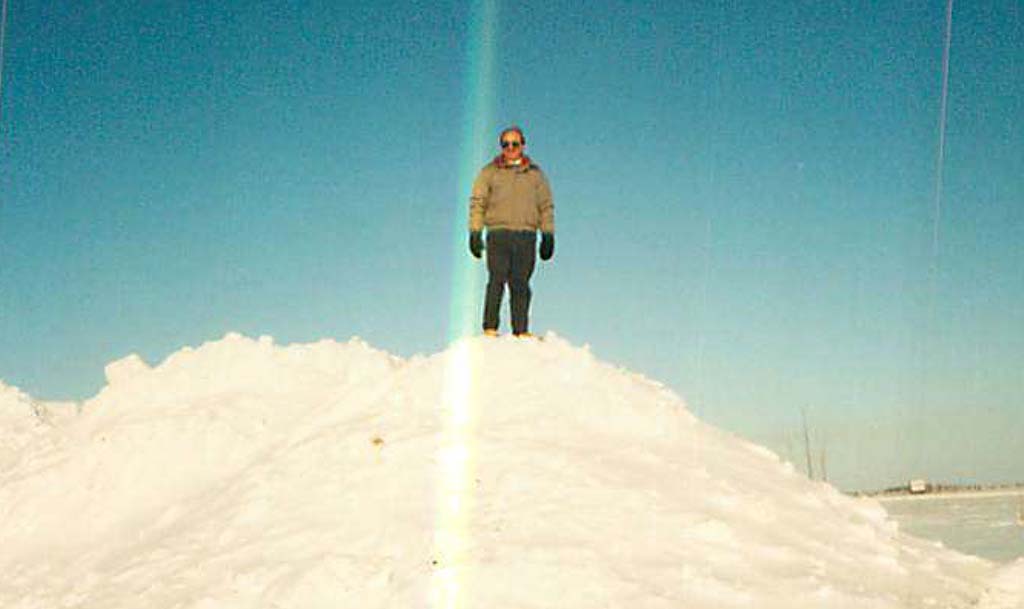
Mike wore a suit and tie, an overcoat and polished shoes. He stayed by the roof access door, the feeling draining away from his face. Nearby, vapors issuing out of the building from a four-inch plumbing vent stack were frozen into a footlong icicle that slanted in the direction of the bitter cold wind.
After his topside inspection, Sharad wanted to walk a final lap around the building’s perimeter. Mike crept along beside him from the warmth of his car. “I told him I’d follow him in case he slipped and fell on his butt,” he said.
Only after those subzero inspections did Sharad peel off his heavy clothes and agree the work was sufficiently done.
We handed the building over to the Postal Service and Mike and his family left to celebrate the rest of his birthday. They had dinner somewhere in Huron, followed by a movie. They were the only ones there for the showing, huddled under emergency blankets from Mike’s car because the theater was so cold.
He doesn’t remember what movie they saw. He will always remember his due diligence, and Sharad Shrestha’s too.
And the world’s largest pheasant? It’s seared in Mike’s memory. He couldn’t forget that if he tried.
